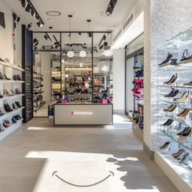Making waves

Retail
398 week ago — 6 min read
The increase in mobile device usage has made it easy to identify potential customers and enable proximity marketing. A few technologies playing a role in this area include: Bluetooth based iBeacons, Eddystone beacons, and Wi-Fi based tracking like radiolocus, Geo fencing based tracking using location services. However, each of these technologies require users to enable some functionality on their smart phones. For instance, Beacons require Bluetooth to be switched on, Geo fencing requires location to be on etc. Sound based technologies can play a key role in overcoming these issues. It is therefore being increasingly used in the area of payments.
Sound wave technology enabled payments can take the digitisation of retail and payments industry to the next high. Due to the ease of deployment, sound wave technology can help extend the digital transformation to tier III cities and rural India.
How it works
Sound wave technology works on an algorithm, which is used to encode data into sound waves which can be transmitted to make offline payments. This, in turn, needs to be integrated into the customer’s as well as the merchant’s phone. The transaction initiated by the merchant’s device generates a sound wave containing encrypted data regarding the payment. The customer’s phone receives this data, the algorithm converts it into analogue signals and completes the transaction. While the transaction is being made, error detecting codes detect accidental errors in the data. The sound waves produced for completing each transaction are unique and do not get mixed or confused with other background noise. The only condition is that phone’s speaker should be functioning properly.
Application in payments
- DigitalWallets or mobile payment apps configured to transfer payments between accounts
- EDC machines configured with the software to accept payments through sound waves
- Point of sales terminals for faster of payment processing resulting in shorter queues
- Apps or chatbots for faster in-store payments
The key to successful payments lies in the security of transactions, which requires multiple levels of encryption, tokenisation and disruptive technologies. Block chain entering this arena can help make the entire payment ecosystem more secure and fool proof.
Why is it better
What differentiates the sound wave technology is its ability to easily integrate with POS terminals, EDC machines, mobile wallets and banking apps without additional hardware. What’s even better is that the customer doesn’t need to be connected to the internet for making the transaction. The technology can also be enabled on feature phones making it accessible to more people, especially in rural areas where smart phones are yet to become ubiquitous.
The technology works even without using communication tools such as NFC. Payments through NFC require the installation of expensive hardware at stores, which is neither economical nor profitable for small scale retailers. In addition, few people have access to NFC-enabled mobile phones. Even QR codes come with their own challenges of unsatisfactory UI/UX and technical glitches.
Players like ToneTag and Tech Mahindra’s MoboMoney are already working in the domain of sound wave technology. HDFC Bank has recently launched UltraCash, based on high frequency sound wave technology. Paytm too has entered this arena.
What’s next
Soon sound wave technology will be used in improving targeted marketing in retail. It is already being used to analyse online and in-store behaviour of customers, leading to more personalised promotions, offers and communication at the right time and location. The efficacy of personalised target marketing can be taken to the next level by analysing what consumers view and hear on various broadcast mediums including TV, YouTube and PA systems.
Software that can analyse what channels the consumers are interested to watch and spend more time on, can help retailers better segment and target their customers in addition to tracking their behaviour online. For instance, a customer spending time on educational channels or documentaries can be targeted for books or DVDs related to similar areas of interest. The marketer can drill down to understand the specific or niche interest areas of the consumer.
Sound wave technology is still in the early stage of development. However, given its benefits and the scope of scalability, it is already gaining traction among retailers. To enable digital transformation, retailers need cost-effective solutions that can be applied across India. Sound wave technology could be the answer.
To explore business opportunities, link with us by clicking on the 'Invite' button on our eBiz Card.
Article contributed by Gunendra Patil & Vidur Kaul for STOrai Magazine
View STOrai 's profile
Other articles written by STOrai Magazine
The Art & Science of People Pleasing in Retail
11 week ago
Most read this week
Trending













Comments
Share this content
Please login or Register to join the discussion